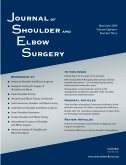
Shoulder & Elbow
Radiographic outcomes of subscapularis-sparing vs traditional approach TSA
J Shoulder Elbow Surg. 2015 Jun;24(6):831-796 patients undergoing total shoulder arthroplasty (TSA) were randomized to either the standard approach or the subscapularis-sparing approach. The purpose of this study was to determine the differences in incidence of humeral head malpositioning, incorrect sizing, and residual osteophytes on radiographs after surgery between the two approaches. Findings showed no significant differences in anatomical parameters between the two methods, although there was a greater incidence of residual osteophytes on postoperative radiographs observed following surgery in the subscapularis-sparing approach compared to the traditional approach.
Unlock the full article
Get unlimited access to OrthoEvidence with a free trial
Start TrialCritical appraisals of the latest, high-impact randomized controlled trials and systematic reviews in orthopaedics
Access to OrthoEvidence podcast content, including collaborations with the Journal of Bone and Joint Surgery, interviews with internationally recognized surgeons, and roundtable discussions on orthopaedic news and topics
Subscription to The Pulse, a twice-weekly evidence-based newsletter designed to help you make better clinical decisions
Exclusive access to original content articles, including in-house systematic reviews, and articles on health research methods and hot orthopaedic topics
Or continue reading this full article
Register Now

Subscribe to "The Pulse"
Evidence-Based Orthopaedics direct to your inbox.




































